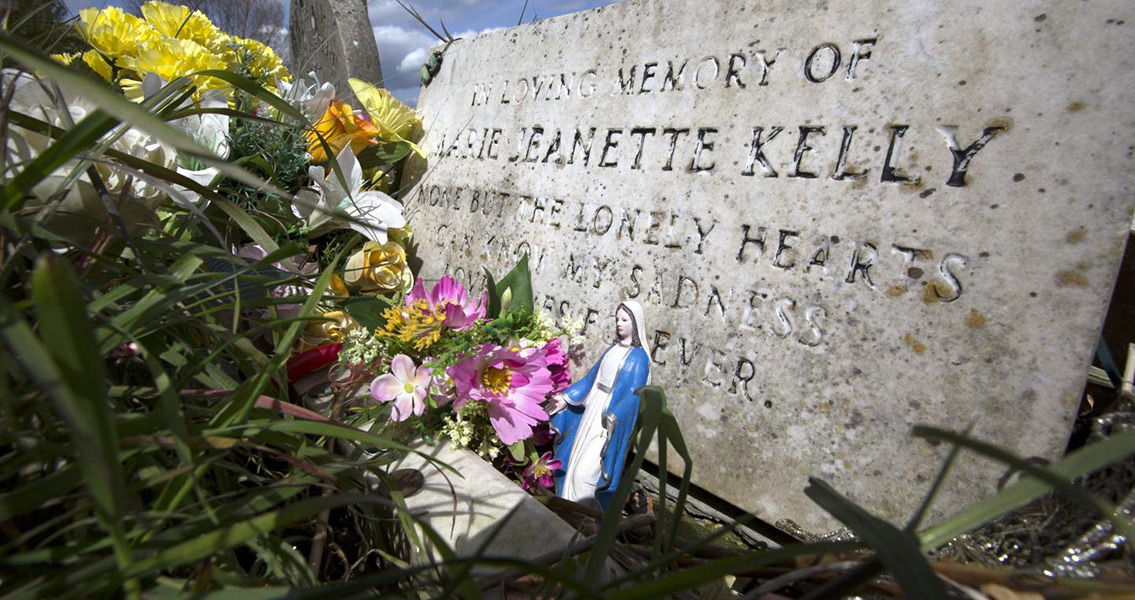<![CDATA[Jack the Ripper lore states that on 9th November 1888 Mary Jane Kelly was murdered and brutally mutilated in her home in Spitalfield's, East London. The ghastly killing is widely held to have brought the serial killer's reign of terror to an end, but was it really Kelly who lost her life that night? The 1888 reign of terror over the English capital continues to be a constant source of intrigue and fascination, and so do Jack the Ripper's victims. In 2015, Mary Jane Kelly's identity was thrown into question when surgeon Wynne Weston-Davies published a book claiming Kelly was actually his great aunt, Elizabeth Weston Davies. Fascinated by Wynne Weston-Davies' claim, crime writer and Jack the Ripper enthusiast Patricia Cornwell commissioned a team of researchers from the University of Leicester to investigate. Among those recruited are scientists who were involved in the discovery and identification of the bones of King Richard III. The team's aim was to determine the feasibility of finding the exact burial location of Kelly's remains, and the likelihood that the remains would be sufficiently intact to undergo DNA analysis. In May last year, the team including Dr Turi King, lead geneticist of the Richard III project, and Mathew Morris, who discovered the remains of Richard III, set off to St. Patrick's Catholic cemetery in Leytonstone to begin their investigation. After analysing the church's burial records, and the graves around the modern marker for Kelly's resting place, the team concluded an area covering hundreds of graves would have to be painstakingly excavated. The findings have been published in a report entitled 'The Mary Jane Kelly Project.' "During initial discussions, two issues arose - it was widely reported in the press in 2015 that the Ministry of Justice had indicated that it would issue an exhumation licence to Wynne Weston-Davies - however in fact, they had only acknowledged that they would consider such an application if submitted." explained Dr. King in a University of Leicester press release. "Secondly, to complete any exhumation application to the Ministry of Justice, a compelling case for the exhumation as well as detailed information on the location and state of the grave would be required, not only for the exhumation of Kelly's remains, but also to determine if any other remains might be disturbed in the process. "However, the precise location of her grave is unknown and, not only that, it rapidly became clear that as such, the remains of a number of other individuals would have to be disturbed and that her remains are highly likely to have been dug through when the communal gravesite she was buried in was reused in the 1940s making accurate identification of any of her remains highly problematic if not impossible." Dr. King concluded. Morris explained: "There have been several modern markers in the cemetery which have commemorated Kelly since the 1980s and its location is likely to have little or no relevance to the real location of the grave. Problems surrounding the location of the grave stem from the fact that this area of the cemetery was reclaimed in 1947, with earlier grave positions being swept away to make way for new burials." Legally, the team would have to get consent from the next of kin of each set of remains likely to be disturbed to carry out any exhumation. With such a large number of remains potentially needing to be excavated, such permission is extremely unlikely to be granted. "In order to make an application to the Ministry of Justice for a licence to exhume Mary Jane Kelly's remains, the case for Kelly being Elizabeth Weston Davies needs to be compelling, not least because to test the theory by exhuming the remains will almost certainly involve disturbing the remains of other individuals buried in the vicinity." explained Professor Kevin Schurer, who also carried out the genealogical study of King Richard III, in a press release. Wynne Weston-Davies claims that Mary Jane Kelly was in fact his great aunt Elizabeth Weston Davies living under a pseudonym. The team acknowledge that were Kelly's remains to be discovered, DNA analysis would be able to confirm if she was in fact Elizabeth. However, they also say that unless the evidence Wynne cites is subject to a full review, there is no grounds to carry out any exhumations. "As such it is extremely unlikely that any application for an exhumation licence would be granted. The simple fact is, successfully naming someone in the historical record only happens in the most exceptional of cases." explained Dr. King. "Most human remains found during excavations remain stubbornly, and forever, anonymous and this must also be the fate of Mary Jane Kelly." Image courtesy of Carl Vivian University of Leicester]]>
Jack the Ripper's Final Victim Still Shrouded in Mystery
